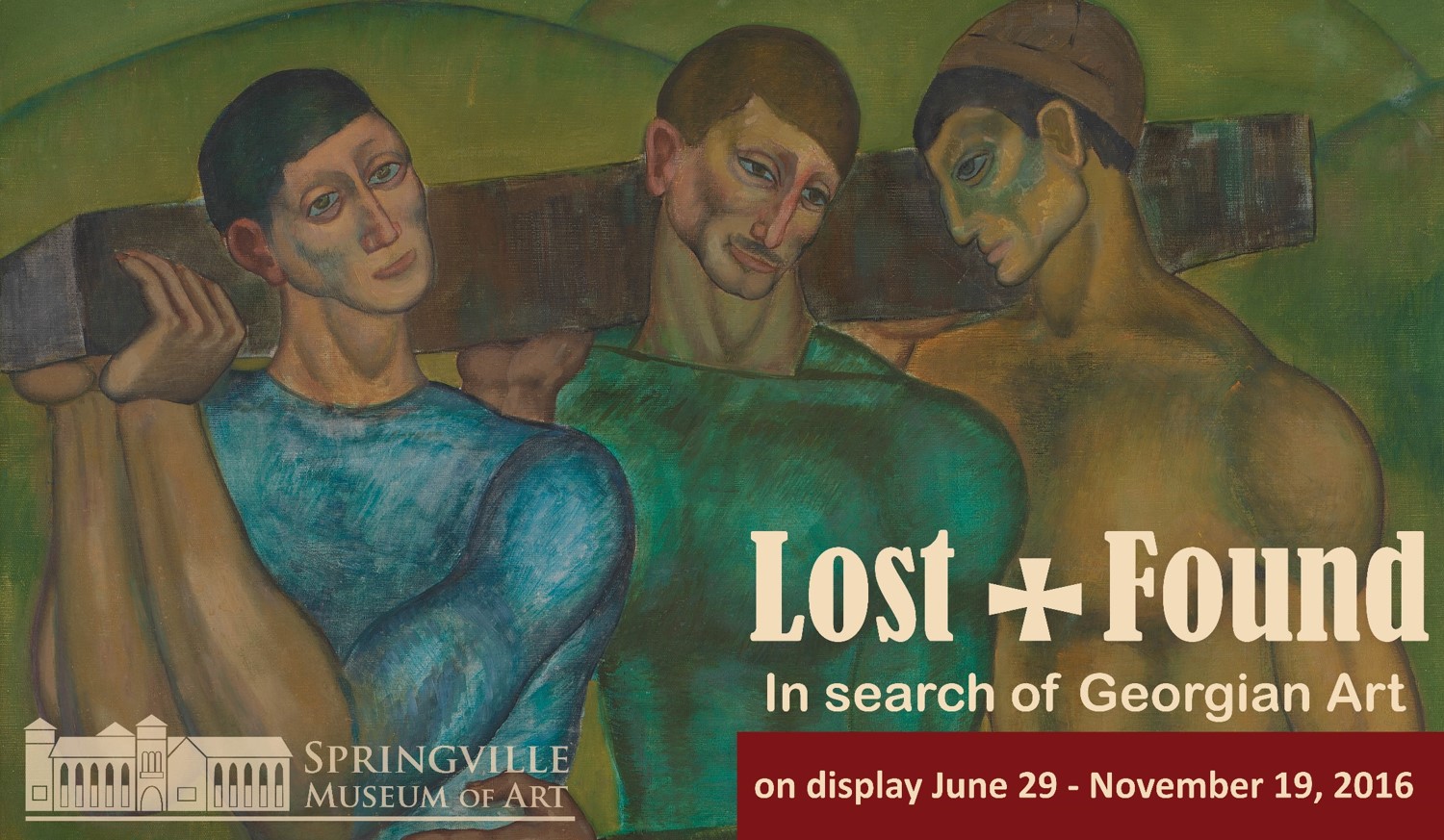
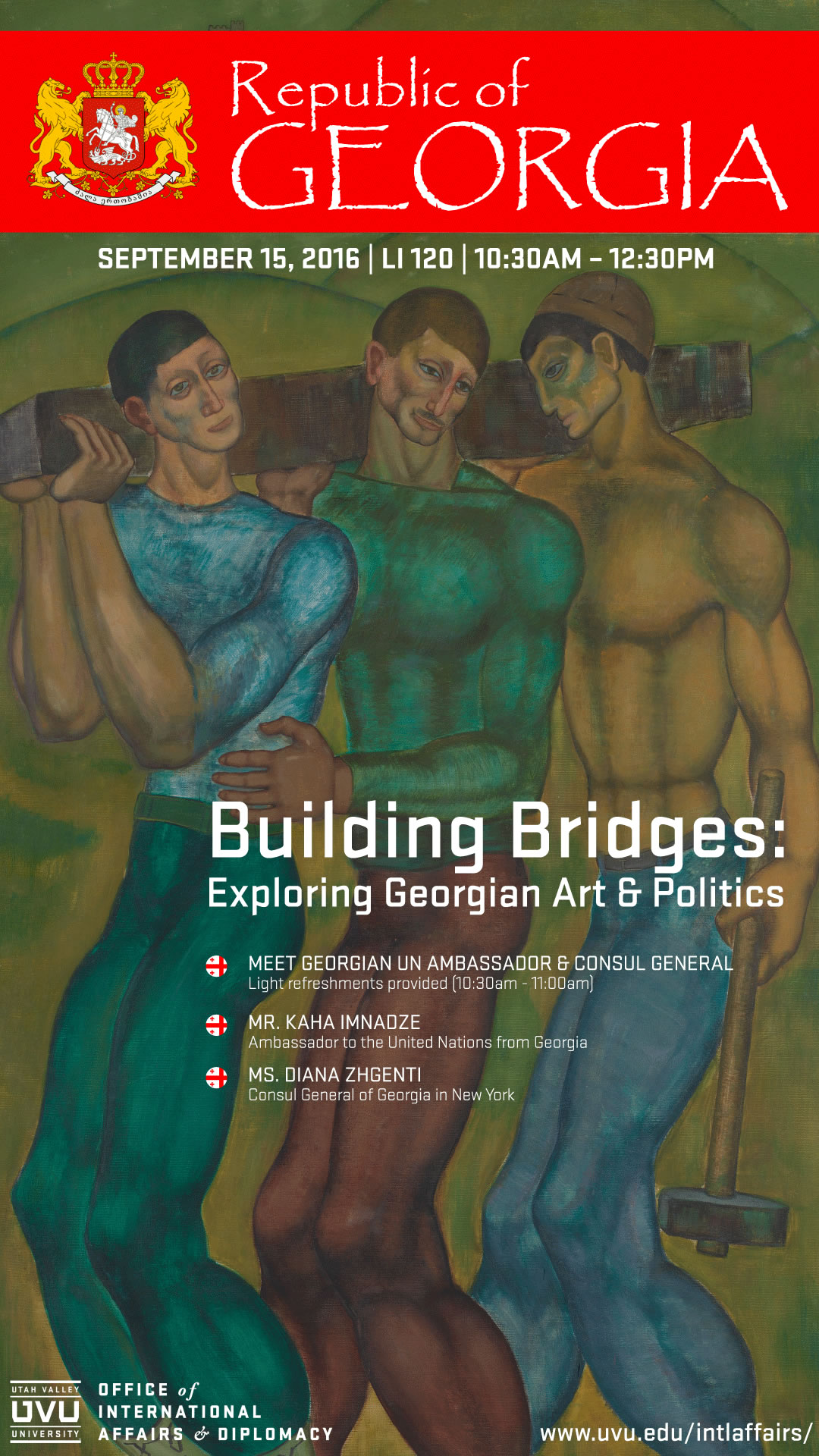
Last week, on September 15, 2016, a delegation of the Republic of Georgia led by Permanent Representative of Georgia to the United Nations, Ambassador Kaha Imnadze, was hosted by Utah Valley University and Utah’s Springville Museum of Art. They were joined by students from several universities from across Utah, and invited guests at an exhibition of Georgian-Soviet era impressionist art that was rescued from destruction in the early 1990s. Event contributed to the theme of “Mountain Cultures: celebrating diversity and strengthening identity,” chosen for this year’s celebration of the United Nations International Mountain Day.
The morning began with a wonderful piano master class by the Georgian cultural attaché Mr. David Aladashvili, graduate of the famous Julliard School in New York. He played the music of Chopin and Georgian composers in UVU’s Gunther Technology building for many of the Art History students, and their music major peers. Following the performance, the Georgian envoy gathered in the common area of the UVU library for refreshments and a meet and great session. This was a highlight of the morning, as it allowed many of the guests to introduce themselves and meet many of their peers from across the state and the globe.
The theme of the event was Building Bridges: Exploring Georgian Art and Politics. It highlighted a new exhibition of Georgian Art at the Springville Museum of Art. The Museum has one of the largest collection of Georgian Soviet impressionist art in the western world. Many of which were rescued by Utah citizens Ellie Sonntag, Roy and Anne Jespersen, and Jeff and Helen Cardon.
In my humble opinion, it was a wonderful exposé of the Georgian transition to the post-Soviet era, and their work in becoming an open, free, liberally-valued, and global responsible country while remaining true to their roots and history and maintaining their world-renowned sense of friendliness and welcoming people. The event began with brief comments and introductions by Dr. Baldomero Lago, Associate Vice President of Global Engagement at UVU, and Dr. Rita Wright, Director of the Springville Museum of Art. Dr. Lago greeted the Georgian delegation and emphasized the importance of the cultural exchanges and art, in particular, as ways to build stronger bonds between the mountain communities like Georgia and Utah. Dr. Wright gave a brief synopsis of the paintings on display at the Springville Art Museum.
As part of students’ engagement activities at UVU, students from universities in the state of Utah were invited to participate in the contest by writing essays about Georgian paintings displayed at the museum. The call for papers was sent out to every major university in the state of Utah in August where students were shown the paintings in the exhibit, were allowed to choose their favorite piece and to write an essay on it for the UVU contest and for submission to the UVU Student Journal Youth and the Mountains.
Second place was awarded to Hannah Leavitt, an Art History major from BYU. Ms. Leavitt expressed the origin of her love of art, which began as a young girl while her parents worked and traveled through Eastern Europe. Her essay was a critique of the painting titled, “The Revolutionist” by an unknown artist. Her wonderfully written criticism was a
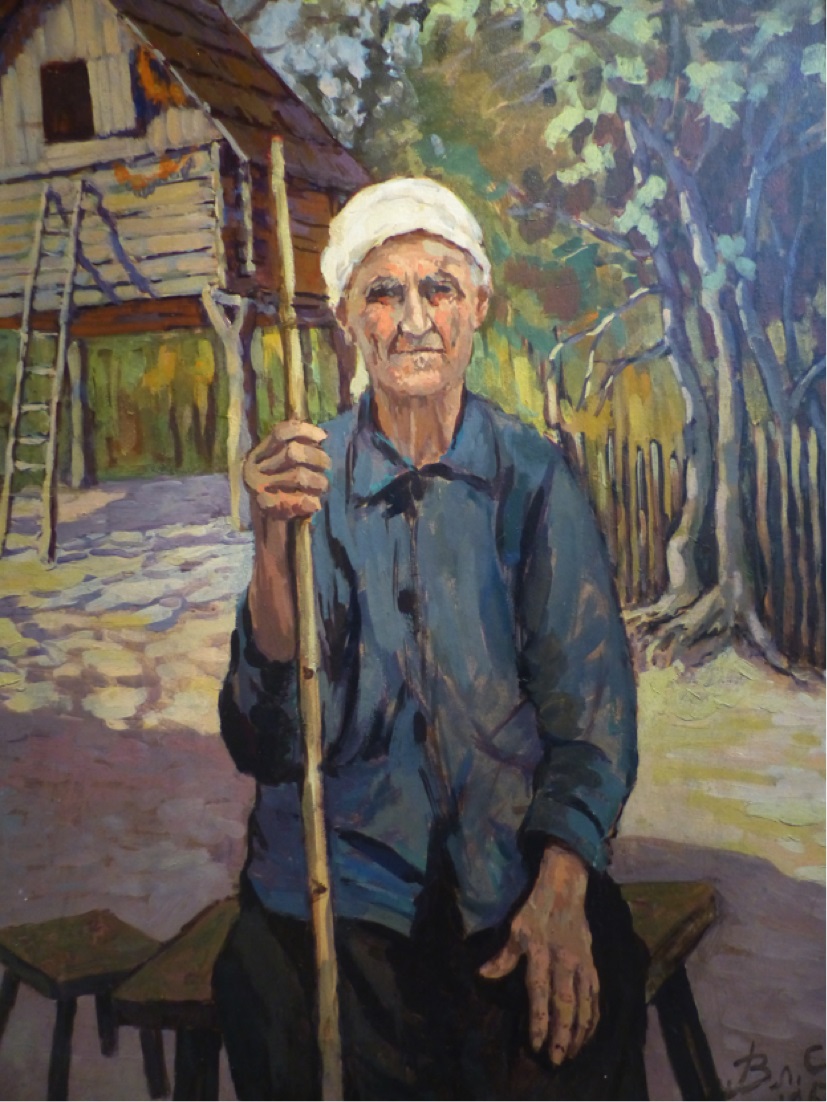
“The Revolutionist” –Artist unknown
deconstructionist interpretation of the meanings and symbolism embedded in the painting. Many of which harkened to the days of old, before the Soviet occupation of Georgia. She expertly made the comparison of the old women in the painting to the patron saint of Georgia, St. Nina, which both shared unmistakable similarities in symbolism and defiance of the Soviet occupation. In the reading of her essay, Hannah can be quoted saying, “She is not the revolutionist they wanted, but she is the revolutionist they received.” This was a strikingly poignant turn of phrase, as she drove her point home that Georgians have been, are, and always will be strong and proud people.
The first place winner was another BYU Art History student, Mrs. Annilyn Spjut. Ms. Spjut was accompanied by her husband and infant child, and expressed her similar origin of love of soviet and Russian cultural and art. She focused her efforts on Mushambadze’s painting, “Sacrificing the Bull,” and made a wonderful comparison to the Georgian film, Abuladze’s Repentance. Within her essay, she focused on the historical roots and overtones of Christianity, and the symbolism of the Madonna and Christ. Both the film and the painting carry these symbols, and depict the harsh life of Soviet oppression, and the will and strength of the Georgian people to defy the Soviet ideology.
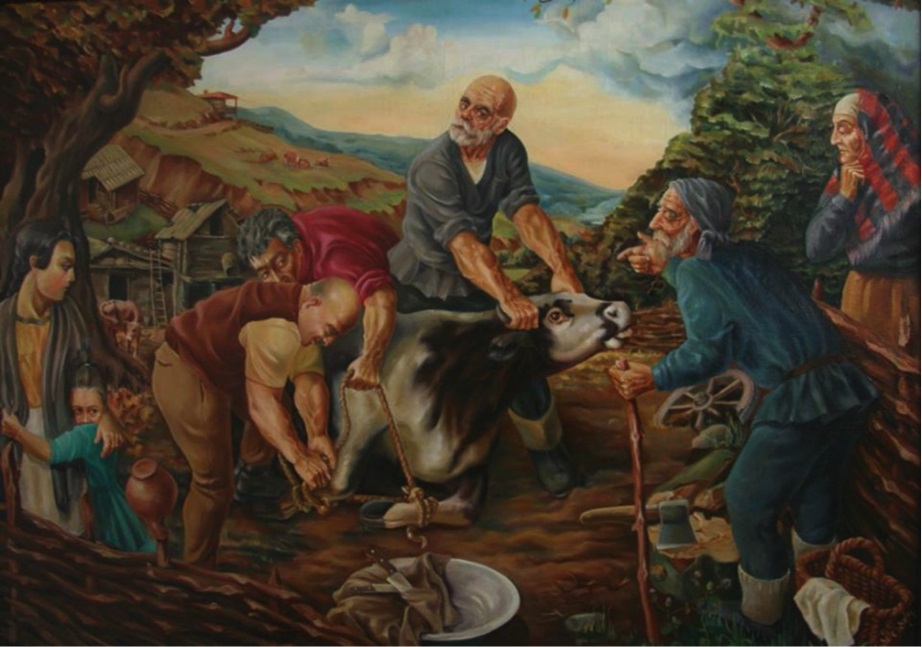
“Sacrificing the Bull” –Mushambadze, A. (1980)
Both essays were wonderfully written and evoked a sense of pride of the Georgian envoy. This was reiterated by the head of the Georgian delegation, Ambassador Kaha Imnadze. He was quoted as saying, “Your essays touched me, really touched me. As you captured the essence of Georgian life, history, and spirit.” While Ambassador Imnadze’s comments did have a hint of international politics to them, he remained focused on the message that the core of Georgian politics is the human being, and said, “Art is the our common bridge with Russia.” Later, he expressed his concern of climate change and sustainable development as the world’s greatest issue, more so than war and conflict. His tone and theme made the point clear that he views people and art as the answer to bridging the gaps between differing opinions.
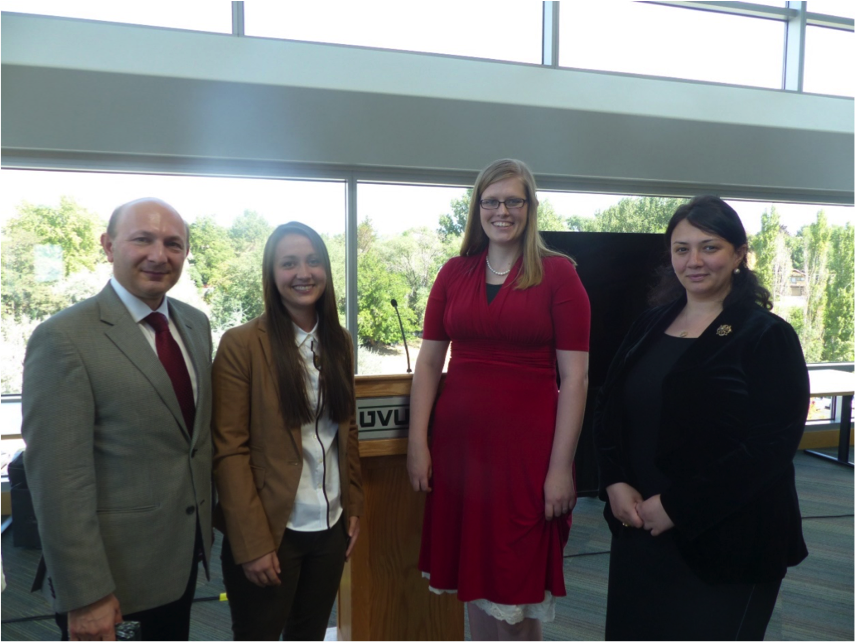
(L to R): Ambassador of Georgia to the UN, Hannah Leavitt, Annilyn Spjut, Consul General Diana Zhgenti
Following the Ambassador’s comments, Mrs. Diana Zhgenti, Consul General of Georgia in New York, gave a wonderful presentation on life in Georgia. One of the greatest points she made was the Georgian sense of inclusivity. To demonstrate this, she showed a slide of the central square in the capital, Tbilisi, where one city block is shared by a church, cathedral, synagogue, and a mosque. This was a wonderful message, which was demonstrated by her comment, “Our country is small, but our hearts are huge.”
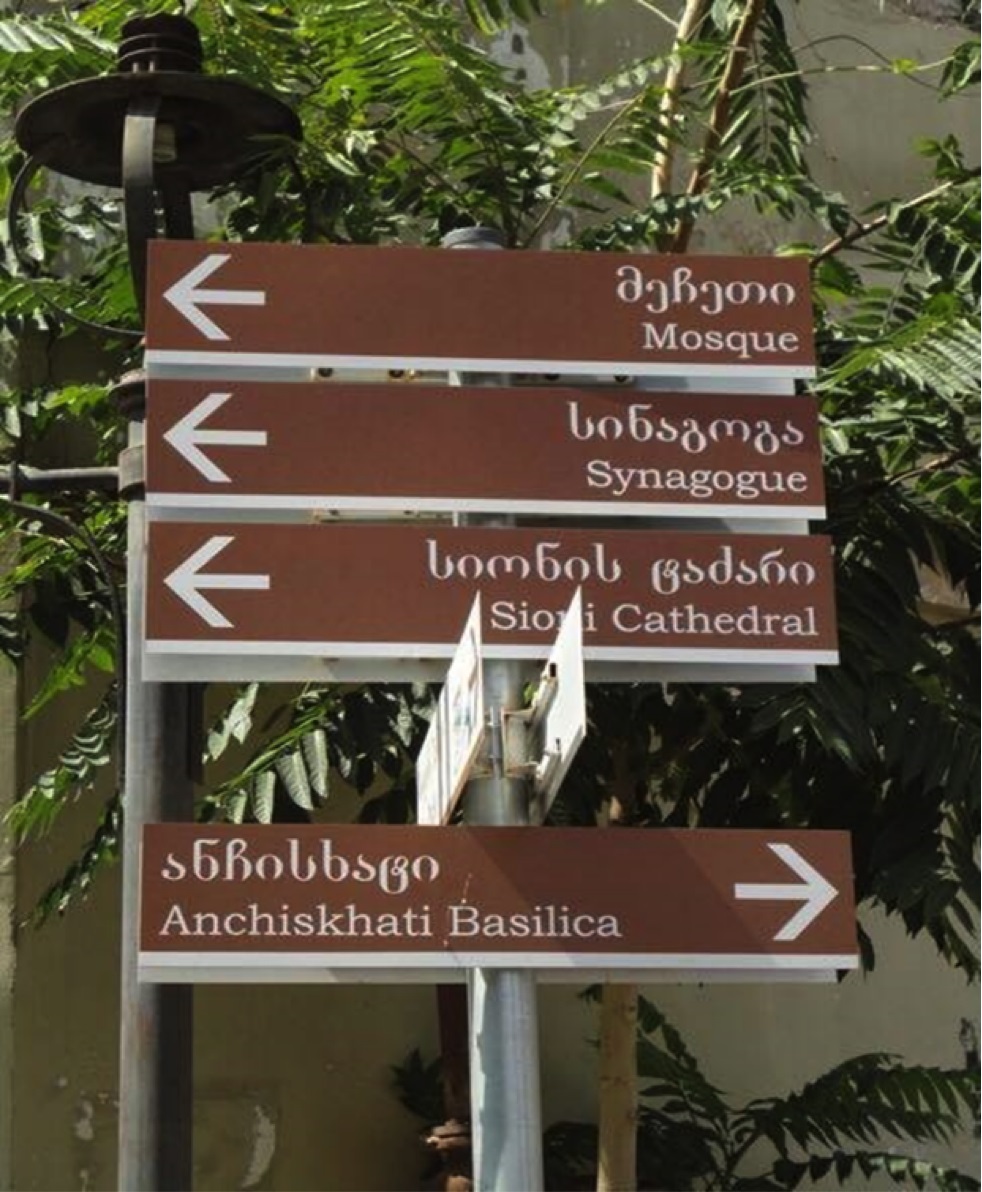
Sign post in Tbilisi, Georgia
Following a luncheon held in the Georgian envoy’s honor, not to mention Dr. Rusty Butler, the former Assistant Vice President of International Affairs and Diplomacy for UVU, and long-time friend and mentor of the UIMF, the group made their way to the Springville Art Museum to view the paintings in person.
During the second half of the day the Springville Museum of Art, unveiled the Georgian exhibition and hosted a special reception in honor of the official delegation from Republic of Georgia and guests of the museum. Once more, the talented musician from Georgia performed music pieces of Chopin, Shuman and Georgian authors to a delight of the audience.
Overall, the event was a wonderful showing of Utah student’s and local communities dedication and professionalism to their crafts, and provided a showing of how the different universities and institutions who are separated by geography can be brought together in a joint effort to celebrate the culture of a new friend in the world. Simultaneously, it allowed Utah to strengthen its ties with Georgia, and explore ways that our cultures are similar and the ways they are different. These events are a wonderful way to reinforce the ideas of the event: building bridges.
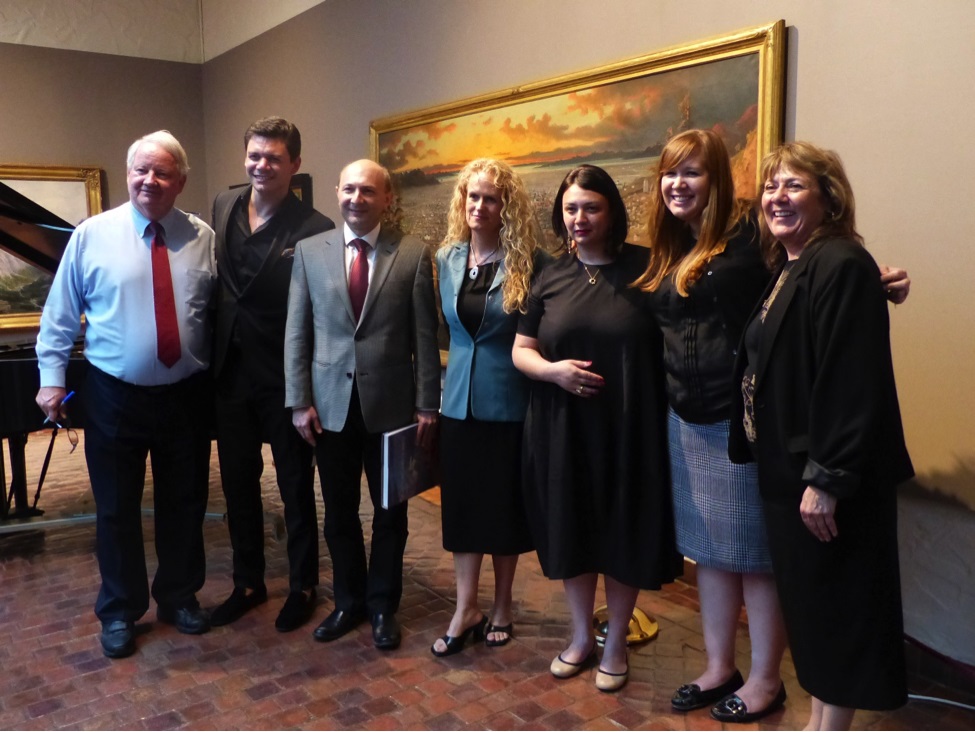
Georgian Delegation with organizers from the Springville Museum of Art
The event was made possible thanks to the efforts from the Office of International Affairs and Diplomacy under the leadership of Dr. Baldomero Lago, with contributions by Dr. Rusty Butler, the former Assistant VP for International Affairs and Diplomacy at UVU who was able to build strong relationships with many PRs to the United Nations and with the Georgian PR in particular.
For more information, visit:
https://www.uvu.edu/intlaffairs/georgian_event.html;
By Tony Medina, President, Utah International Mountain Forum
***
2016 issue of the Youth and the Mountains journal with published student papers

